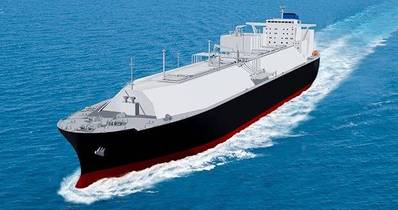Ship Glut Burdens LNG Tanker Market, Slashes Profits
By Jonathan Saul and Oleg Vukmanovic, Reuters
Deliveries of new gas tankers have created a glut that is threatening to tip some operators into losses, just as other shipping markets emerge from their worst downturn in decades.
The liquefied natural gas (LNGLF) (LNG) tanker market was until recently the only bright spot in an otherwise depressed freight industry. A global surge in the demand for gas, led by Japan in 2011, boosted trade, tied vessels to longer routes and drove rental rates to record highs.
But the 119 new carriers ordered from 2011 will have expanded the fleet by over 30 percent by end-2017. As tankers leave the shipyards, delays in construction of new LNG export plants and erratic global gas output have curtailed demand for them.
Earnings have halved to around $70,000 per day over the past year, leaving only a thin profit margin. Owners that relied on financing to buy new vessels may be barely covering their debt payments.
"Some of the highly leveraged owners dependent on spot or short-term business will be close to their breakeven costs at current rates," Erik Stavseth of Arctic Securities said.
Industry analysts warn of a still deeper slump ahead as attempts by owners to delay deliveries of new vessels could result in a surge of additional capacity by year-end.
Thirty-two vessels were delivered to the global fleet this year, and another 63 are expected over the next two years.
"It is generally accepted that day-rates are not going back to 2011-2012 levels this year as there are just too many vessels available in the market," said Jon Skule Storheill, chief executive of Norwegian ship owner Awilco LNG.
"We need to see more LNG volumes on the water as well as some older vessels disappear first," he added.
Golar LNG (GLNG) described the market as very challenging in February due to growing supply and lacklustre LNG output.
Scrapping
The lower returns are putting pressure on ageing vessels, known as Old Ladies, to retire, given their higher costs for maintenance, upkeep and fuel.
Data from maritime analysis firm VesselsValue.com showed that 13 LNG tankers have been scrapped since 2010. Another 42, which are 30 years or older, are candidates for scrapping, Stavseth said.
The oldest LNG tankers now in the fleet - the 1969-built SCF Arctic and SCF Polar - are to be sold for scrap by Russian owner Sovcomflot Group this year once their charters with Spain's Gas Natural Fenosa expire.
Norway's Hoegh LNG has sent its Norman Lady, a 1973-built vessel, to a Chinese scrap yard, where the metal will be stripped and resold.
Peter Sand, chief shipping analyst with trade association BIMCO, said the ships scrapped were mainly smaller LNG carriers. "LNG vessels live a very long life," he said. "For fundamental oversupply to crumble into dust, we need at least two to three years of strong demand growth to counterbalance the recent contraction."
Fragile Recovery
In contrast, rates are rising for crude and oil products tankers and for the dry freight market after over five years of depressed conditions.
"Most shipping markets, with the exception of LNG, are in the early stage of a cyclical revival as fleet growth falls below trend for the next several years, while a stronger global economy revives growth in tonnage demand," RS Platou Markets said in a report.
Ship owners in those segments ordered large numbers of vessels between 2007 and 2009, just as the global economy sank into its biggest crisis since the 1930s. It usually takes three years for a vessel to be delivered after it is ordered.
"The pace of new deliveries is slowing down sharply, with only a handful of crude tankers delivered in both Q4 last year and the year-to-date in 2014," Pareto Securities said.
"We believe this will continue in 2014 and 2015, with many cancellations and delays on the ghost ships currently dominating the order books."











